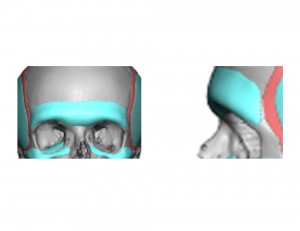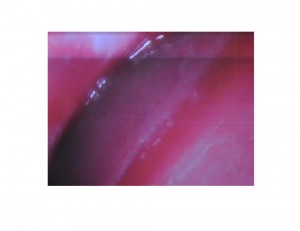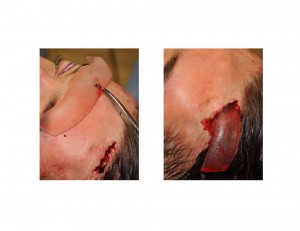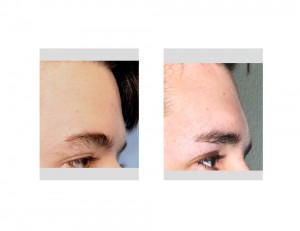Background: The forehead occupies one-third of the face and has a significant role to play in overall facial aesthetics. One component of the forehead is the prominence of the supraorbital rims, also known as the brow bones. How prominent they are affects the shape of the forehead and the appearance of the eyes. The more prominent the brow bones, the more deep set one’s eyes will appear. The more prominent the brow bones, the more masculine one’s facial appearance will look..
For men who seek brow bone augmentation, the traditional treatment options have had their drawbacks. Access to the brow bone area has had to be done through a long open incision placed either at the hairline or further back in the scalp. This has some obvious limitations for many men given what their frontal hairline pattern and density may be. In addition, there are no preformed brow bone implant options available. As a result various types of bone cements have to be used, which can be done successfully, but still requires a wide open forehead exposure to do.



The endoscopic approach provides good pocket dissection and visualization of the supraorbital nerves for implant insertion and placement. While this works extremely well for implants, it would equally so for preformed or standard sized brow bone implants if they were available.
Case Highlights:
1) Brow bone augmentation as an isolated procedure can be done through either preformed or custom implant designs.
2) An endoscopic approach through two small scalp incisions can be used for brow bone implant placement with very minimal scarring.
3) An endoscopic implant placement technique now makes it more feasible for men or women who seek a higher profile to their brow bones.
Dr. Barry Eppley
Indianapolis, Indiana




